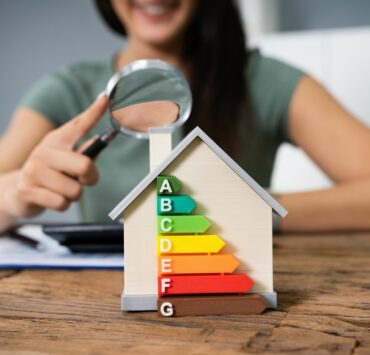Be Ready for Anything. Prepare the Unexpected with Home Safety Tips and Emergency Preparedness Checklist
Whether it’s a natural disaster, home invasion, or medical emergency, being ready for anything can mean the difference between life and death.
This article goes through a safety checklist of the basic action points for a home safety and emergency preparedness guide.
Read on to learn how to be ready for anything that comes your way.
Create an Emergency Kit
The first step in being prepared for an emergency is to create an emergency kit. This kit should include first aid supplies, non-perishable food, water, a flashlight, batteries, and a radio. Keep your emergency kit in a designated location that is easy to access, and make sure everyone in your household knows where it is.
To help you determine what should go into your emergency kit, The Epoch Times outlined 5 key questions to help you determine what is essential. Consider it a north star when determining a ‘must have.’ Ask yourself:
- Is it irreplaceable?
- Does your life depend on it?
- Is it in use daily?
- Does it have monetary value?
- Is it something you keep in a home safe?
By being able to distinguish what is necessary, you can create a well rounded emergency kit with everything you need.
Develop an Emergency Plan
Anyone who wants to be prepared in the face of an emergency needs to develop an emergency response plan. An emergency plan should consist of critical elements such as escape routes, designated meeting places, and communication procedures. This plan should include an emergency kit with essential supplies and an actionable plan that outlines the specific steps to take during an emergency.
One of the key aspects of an emergency plan is to establish clear evacuation routes. Take the time to map out multiple routes out of your home or building, depending on the situation. For instance, if a fire breaks out, you may need to exit through a window or balcony if the primary exit route is blocked. Therefore, it’s essential to discuss and practice these routes with everyone in your household to ensure that they are familiar with them and can quickly and safely evacuate when necessary.
Another essential element of an emergency plan is to designate meeting places where your family can gather after evacuating. The location should be a safe and easily identifiable spot that everyone knows and can reach. This is especially important in cases where your home isn’t accessible.
Lastly, establish communication procedures that enable you to contact each household member. Cellphones are a main staple, but radios and walkie-talkies are also viable communication options.
Developing a comprehensive emergency plan can help protect your family and minimize potential harm during unexpected events.
Secure Your Home
Taking proactive steps to secure your home as a preventative measure against emergencies is one of the best ways to avert them. By implementing effective security measures, you can reduce the likelihood of intrusions, burglaries, and other incidents that may compromise your safety.
One of the essential steps in securing your home is to install high-quality locks on all doors and windows. Ensure that all entry points are properly secured and that the locks are in good working order. Additionally, make sure that all doors and windows are locked when you’re not at home. This can help deter potential intruders from attempting to gain access.
Another effective method for securing your home is to install a security system. A security system can provide an added layer of protection, alerting you and the authorities to potential threats and enabling a quick response.
Also, consider installing outdoor lighting to illuminate your property and deter intruders. By taking these measures, you can help ensure your home is safe and secure for you and your family.
Install Fire Extinguishers
Fires are a serious threat to your home and family.
Luckily, having a proper fire safety system can significantly minimize the degree of danger fire poses. Having at least one fire extinguisher placed on each level of your home is the most basic essential for any household. Fire detectors and an accompanying fire suppression system can make all the difference between a major or minor fire emergency.
Train all members of your household on how to properly use a fire extinguisher as well as what the protocol is in the event of a fire.
Make it a habit to regularly inspect and update your fire extinguishers and fire suppression system so they’re reliable and working in the face of an emergency.
Stay Informed
Staying informed is a critical component of emergency readiness. Keeping up-to-date on weather forecasts, emergency procedures, and local alerts can help you prepare and respond to potential threats.
One of the most effective ways to stay informed is to monitor weather forecasts regularly. Being up to date on current weather conditions, you can prepare for severe weather events, such as hurricanes, tornadoes, and blizzards.
Also, consider downloading weather apps or subscribing to weather alert services to receive real-time updates and notifications.
It’s also important to familiarize yourself with emergency procedures in your workplace, your child’s school, and your community. Knowing evacuation routes, shelter locations, and emergency contact information can help you respond quickly and effectively in an emergency situation. Additionally, signing up for emergency alerts from your local government or emergency management agency can provide crucial information about potential hazards, evacuation orders, and other critical updates.
Disaster preparedness and having an emergency response plan means being ready for anything. It requires planning and having the proper safety checks in place. Taking the time to prepare accordingly is a small effort that’s well worth the safety of you and your loved ones. Remember, being prepared can save your life and the lives of those around you.
Related posts:
 Here’s Why You Should Get A Home Inspection Before Selling
Here’s Why You Should Get A Home Inspection Before Selling
 Home Maintenance: Ultimate Checklist Every Home Owner Should Know
Home Maintenance: Ultimate Checklist Every Home Owner Should Know
 10 Precautions to Stay Safe During a Home Renovation
10 Precautions to Stay Safe During a Home Renovation
 Home Insurance Coverage: A Comprehensive Guide to Protecting Your Home
Home Insurance Coverage: A Comprehensive Guide to Protecting Your Home
 Affordable Rental Provider Repays $710K to Arlington County
Affordable Rental Provider Repays $710K to Arlington County



